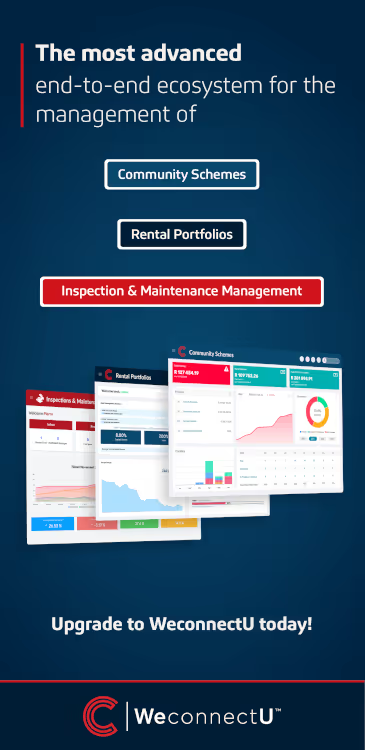Sectional Title Surge: The smart money’s moving in
- Affordability, security and “lock-up-and-go” convenience are pulling buyers into sectional title.
- Developers pivot to density; prime nodes show fast sell-through and firm rentals.
- Investors follow yields and low vacancies; momentum holds despite rate-cycle noise.
What’s happening and why it matters
Sectional title (ST) has shifted from niche to mainstream across South Africa’s metros. Compared with freehold, ST offers lower ticket sizes, shared maintenance, tighter security and the lifestyle flexibility modern buyers want.
That mix now aligns with post-pandemic habits, budget pressure and densification policies, supercharging demand and tilting price performance in key nodes.
The sector in plain English
“Sectional title” covers apartments and townhouses where owners hold a unit plus a share of common property governed by a body corporate. Costs like exterior maintenance, security, landscaping and amenities are pooled, trimming individual outlays and admin. For landlords, that can mean better expense predictability; for owner-occupiers, it’s convenience without the freehold carrying costs.
The spark behind the surge
FNB’s House Price Index flagged a turning point: by July, ST equity gains marginally outpaced freestanding homes for the first time since the pandemic.
FNB links the pivot to the 2021 - 2023 rate-hike cycle that pushed buyers toward “compact, cost-effective housing options.” Even as the rate environment improves, the ST preference has stuck: value, security, and amenity-rich living have become structural, not cyclical drivers.
Lightstone’s read is nuanced. In August, it recorded national ST inflation at 4.3% versus 4.8% for freehold, proof that performance rotates by month and market, but the medium-term trend shows ST steadily closing and in select nodes exceeding freehold growth.
Lightstone also highlights who’s driving activity: women account for 69% of homeownership either solely or jointly an influential buyer cohort for ST stock.
Voice of the market - BetterBond
“Affordability and lifestyle changes favouring lock-up-and-go convenience are among the drivers,” says Bradd Bendall, BetterBond’s National Head of Sales.
“Younger and first-time buyers in particular are drawn to sectional title properties because they are more accessible, require less maintenance and often offer desirable communal amenities.” That’s flowing through to approvals, launches and mortgage pipelines in the metros.
Supply’s catching up, but unevenly
Developers have moved. FNB points to a +13.5% year-to-date rise in new flats/townhouses sold or leased as ST. Still, approvals are choppy; July’s building-plan approvals for likely ST stock fell 21.2% - a warning that pipeline must keep pace with absorption or the affordability edge will erode.
Where municipalities enable zoning reform and higher density, supply is healthier: Cape Town’s southern suburbs alone count double-digit new projects; inner-city Cape Town has seen R2.93bn of new residential value under way, with median ST prices in the CBD up 16.3% year on year.
Who’s buying and where
- First-timers & young professionals: ST is the on-ramp, lower deposits, predictable levies, and no transfer duty if buying off-plan.
- Women buyers: A dominant force per Lightstone; ST’s security and amenity balance is a standout.
- Semigrants & two-city professionals: “Lock-up-and-go” fits hybrid work and frequent travel.
- Investors: Chasing durable yields and low vacancy. TPN’s Residential Gross Yield on ST units touched around 10.79% toward the end of 2024, compelling against cash, especially in well-managed schemes.
Geographically, Gauteng remains the volume engine (jobs draw buyers), with Western Cape and KZN as price-power nodes. Durban/Umhlanga are ST hotspots, while Gqeberha’s investment influx is pulling younger families and professionals into new-build schemes.
Trends shaping demand (the ‘why’)
- Affordability math: Smaller footprints and shared costs keep total monthly outlay in reach, even as rates, utilities and security escalate.
- Amenity arms race: Gyms, co-work, high-speed fibre, concierge and energy resilience (solar, inverters) are now baseline expectations.
- Urban policy & density: Upzoning and mixed-use precincts nudge buyers toward ST living near transport, jobs and schools.
- Risk management: Body-corporate governance and professional management reduce single-owner maintenance shocks, valued by both end-users and landlords.
What the data says at a glance
- Performance: FNB sees ST narrowing and, in phases, beating freehold on equity gains; Lightstone shows node-specific outperformance despite monthly variations.
- Participation: Women at 69% of ownership (sole or joint) are pivotal to ST traction (Lightstone).
- Investor case: TPN shows double-digit gross yields on ST; inner-city Cape Town ST prices +16.3% in the latest cycle, with strong rental demand and incredibly low vacancy in quality blocks.
Momentum forward and why it should last
- Macro support: Gradual rate relief, stable inflation expectations, and wage normalization favour entry-level and mid-market buying power.
- Structural demand: Household formation, semigration, and work-from-anywhere sustain demand for secure, serviced, well-located apartments/townhouses.
- Developer pivot: More rightsized units and energy-savvy designs at scale, keeping OPEX down and values supported.
- Capital flows: Banks lean into bankable ST stock; investors follow as levy discipline and amenities sustain rentals.
Bottom line
Sectional title’s rise isn’t a blip, it’s the market adjusting to how South Africans want to live and invest now. With affordability, security, shared amenities and thriving urban nodes in its favour, ST has the wind at its back.
Expect continued depth from first-time buyers, sustained investor interest where yields and governance are strong, and a pipeline that, where approvals allow, keeps the lock-up-and-go engine humming.




.avif)

.avif)


.avif)

.avif)




.svg)

.avif)
.avif)







%20.avif)





.avif)
%20.avif)
